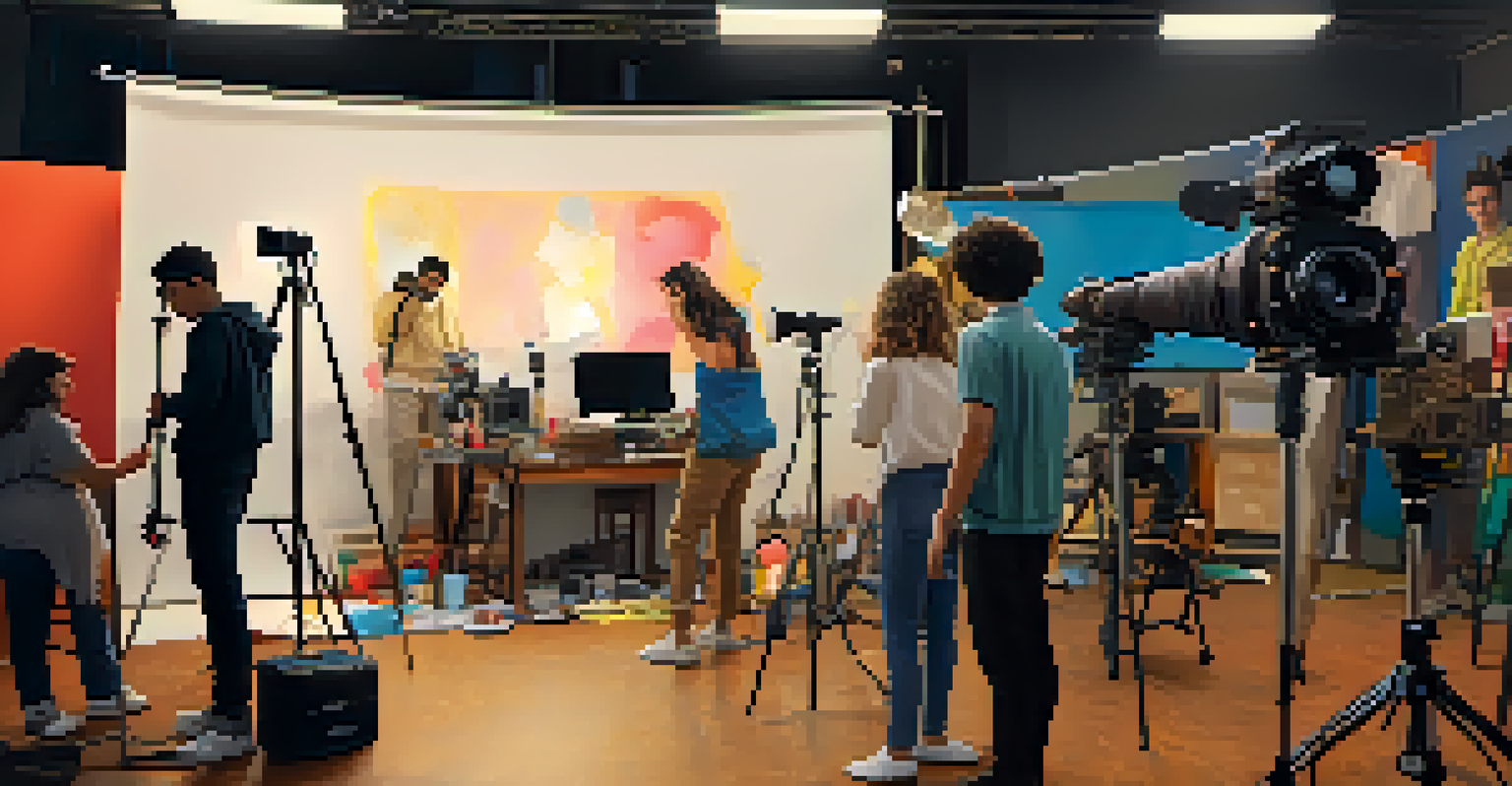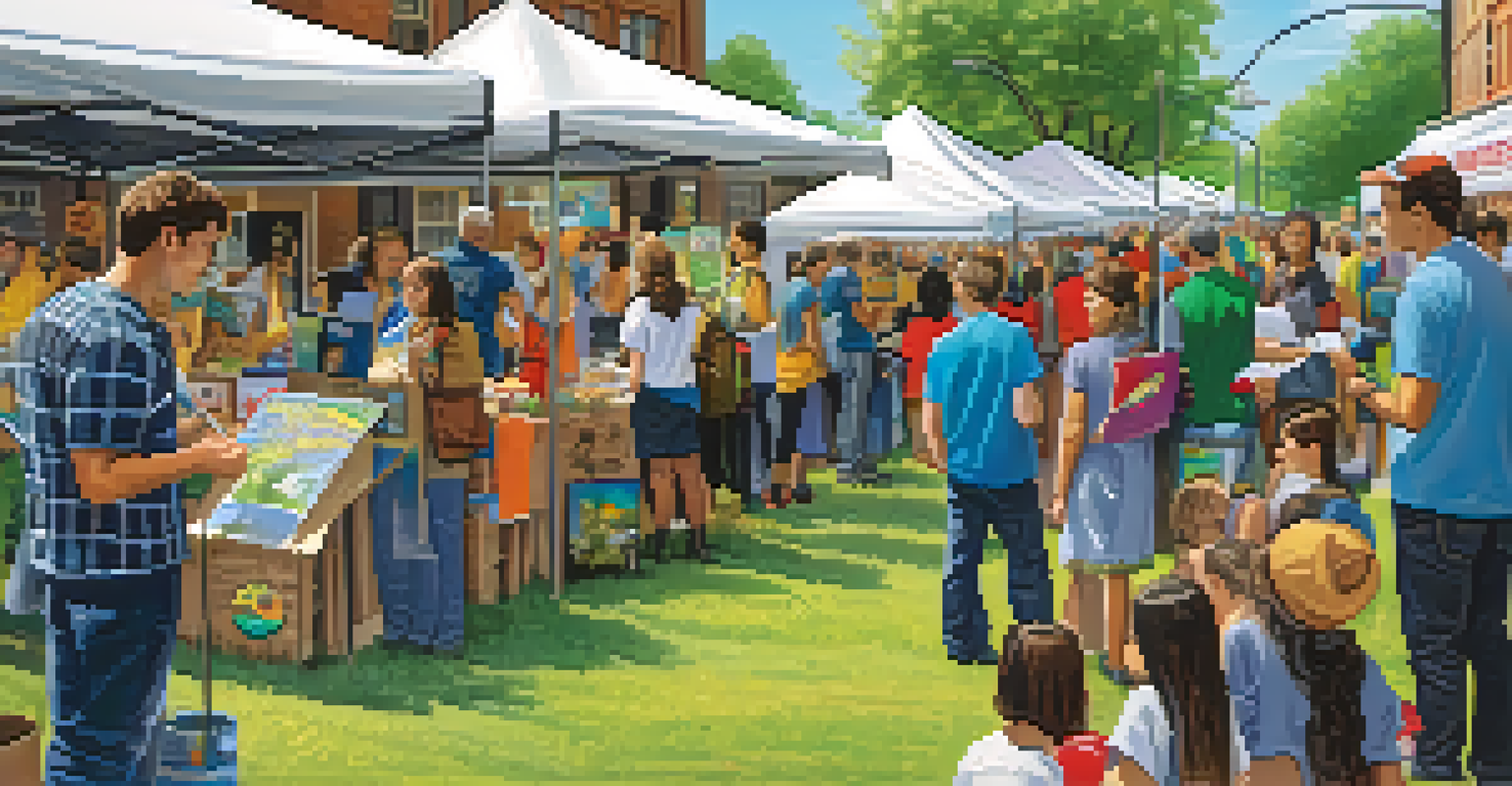Real-World Applications of Project-Based Learning Strategies

Understanding Project-Based Learning: An Overview
Project-Based Learning (PBL) is an educational approach that engages students in real-world projects to enhance their learning experience. Instead of traditional lectures, students tackle complex questions or problems, fostering deeper understanding and critical thinking skills. This method encourages collaboration and creativity, allowing learners to take ownership of their education.
Project-based learning transforms the classroom into a dynamic space where students are empowered to take control of their own learning.
Through PBL, students develop essential skills like problem-solving and teamwork, which are highly valued in today's workforce. Imagine a group of students working together to create a sustainable garden; they learn not just about biology, but also about planning, resource management, and environmental responsibility. This hands-on approach makes learning more relevant and applicable to their lives.
Ultimately, PBL prepares students for the complexities of the real world, equipping them with the tools to navigate challenges and innovate solutions. By connecting academic content with practical applications, educators can inspire a love for learning that extends beyond the classroom walls.
PBL in STEM Education: A Perfect Fit
Science, Technology, Engineering, and Mathematics (STEM) subjects lend themselves particularly well to Project-Based Learning strategies. By engaging students in projects that require them to apply scientific principles or engineering concepts, educators can create a dynamic learning environment. For instance, constructing a model of a renewable energy source allows students to grasp complex ideas in a tangible way.

These projects not only solidify theoretical knowledge but also enable students to see the practical implications of what they're learning. When students work on real-life problems, like designing a water filtration system, they can appreciate the significance of their studies in addressing global issues. This connection often leads to increased motivation and interest in STEM fields.
PBL Enhances Real-World Learning
Project-Based Learning engages students in hands-on projects that connect academic concepts to real-life situations.
Moreover, collaborative projects in STEM encourage diverse perspectives, fostering innovation and creativity. Students learn to communicate their ideas effectively, work as part of a team, and tackle challenges from multiple angles—skills that are invaluable in any career path they choose.
PBL in the Arts: Creativity Meets Structure
Project-Based Learning is equally transformative in the arts, where creativity can flourish within structured projects. For example, students might collaborate to produce a short film, which requires them to write scripts, direct scenes, and edit footage. This process not only hones their artistic skills but also teaches them about project management and teamwork.
The best way to predict the future is to create it.
By engaging in such projects, students learn to express their ideas and emotions through various mediums, whether it’s visual arts, music, or theater. They gain confidence in their abilities and learn to appreciate the artistic process, from conception to completion. This hands-on experience cultivates a deeper understanding of artistic principles and techniques.
Furthermore, art projects often encourage reflective thinking, as students critique their work and the work of their peers. This feedback loop fosters a growth mindset, helping them to embrace challenges and view constructive criticism as a pathway to improvement.
PBL in Social Studies: Connecting to the Community
In social studies, Project-Based Learning can bridge the gap between academic content and community engagement. Students might undertake projects that explore local history or social issues, such as organizing a community event or conducting interviews with local leaders. This not only deepens their understanding of the subject matter but also instills a sense of civic responsibility.
For instance, a group project analyzing the impact of a local environmental issue can lead students to propose actionable solutions, encouraging them to think critically about their role in the community. By connecting historical events with current societal challenges, students gain a richer, more nuanced understanding of the world.
PBL Cultivates Essential Skills
Through collaborative projects, students develop critical skills like problem-solving, teamwork, and communication.
Moreover, these projects empower students to become active participants in their communities. They learn the importance of advocacy and can see the direct impact of their efforts, reinforcing the value of education in effecting real change.
PBL in Business Education: Skills for the Future
In the realm of business education, Project-Based Learning prepares students for the realities of the corporate world. By working on projects such as developing a business plan or creating a marketing campaign, students gain practical experience in entrepreneurship. This hands-on approach equips them with essential skills like financial literacy, strategic planning, and effective communication.
For example, students might work in teams to launch a simulated startup, allowing them to navigate the challenges of budgeting, marketing, and product development. This experience not only enhances their understanding of business concepts but also fosters teamwork and leadership skills. They learn to think critically and adapt to changing circumstances, which are crucial in today’s fast-paced business environment.
Additionally, these projects often involve real-world stakeholders, such as local businesses or community organizations, providing students with networking opportunities. Engaging with professionals can inspire them and offer insights into potential career paths, making their learning experience even more relevant.
Assessment Strategies for PBL: Measuring Success
Assessing student performance in Project-Based Learning requires a shift from traditional testing methods to more holistic evaluation techniques. Educators can utilize rubrics that measure not only the final product but also the process of collaboration, creativity, and critical thinking. This approach ensures that students are recognized for their efforts and growth throughout the project.
For instance, teachers might assess students on their ability to work in teams, communicate effectively, and demonstrate problem-solving skills. By focusing on these competencies, educators can provide more meaningful feedback that supports student development. This kind of assessment encourages students to take risks and be innovative, knowing that their learning journey is valued.
Assessment in PBL Focuses Holistically
Evaluating student performance in Project-Based Learning emphasizes collaboration and creativity over traditional testing methods.
Moreover, self-assessment and peer feedback can play a crucial role in the evaluation process. When students reflect on their own contributions and receive constructive feedback from peers, they develop a deeper understanding of their strengths and areas for improvement, leading to a more enriching learning experience.
Challenges and Solutions in Implementing PBL
While Project-Based Learning offers numerous benefits, it can also present challenges for educators. One common hurdle is the need for adequate resources and time to plan and execute meaningful projects. Teachers may feel overwhelmed by the demands of managing group dynamics and ensuring that each student is engaged and learning effectively.
To address these challenges, professional development and collaboration among educators can be invaluable. Sharing strategies, resources, and experiences can help teachers feel more confident in implementing PBL. Additionally, starting with smaller, manageable projects can ease the transition and allow educators to build their skills gradually.

Lastly, involving students in the planning process can foster ownership and investment in their projects. When students have a say in the topics they explore and the methods they use, they are more likely to stay engaged and motivated, ultimately leading to a more successful PBL experience.